Faculty Books
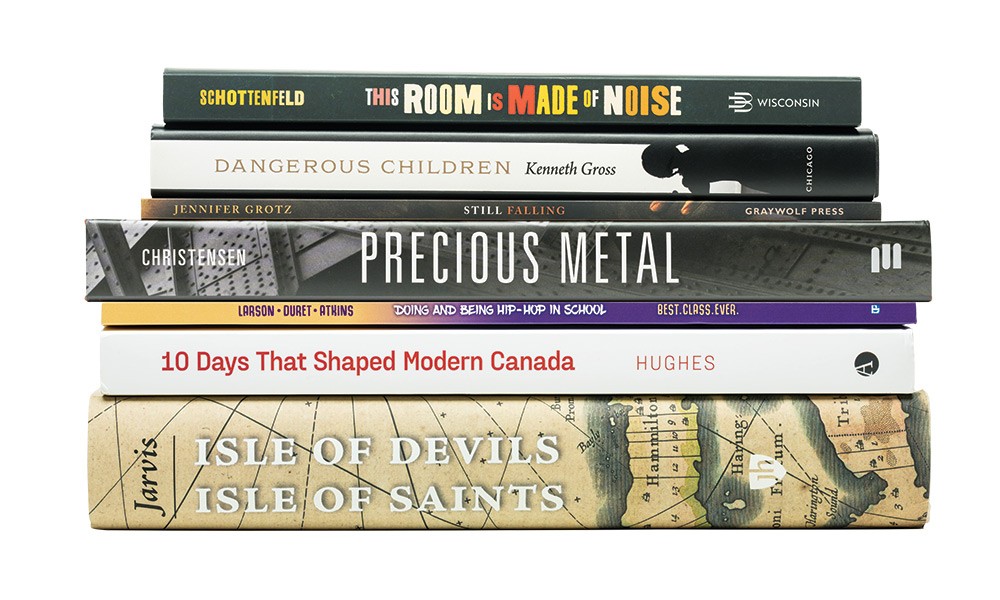 (Photograph: J. Adam Fenster)
(Photograph: J. Adam Fenster)A new take on Pinocchio and other oddball children in literary classics.
A story of a complicated friendship between an elderly widow and a much younger handyman.An up-close look at a hip-hop curriculum made collaboratively by high school teachers and students.
Books published by Rochester faculty over the past year show that academic expertise can intrigue a wider range of readers than students or specialists. We offer a few suggests for your reading list.
10 Days that Shaped Modern Canada
University of Alberta Press, 2022
Hughes begins on October 13, 1970, with just a few words uttered by Prime Minister Trudeau.
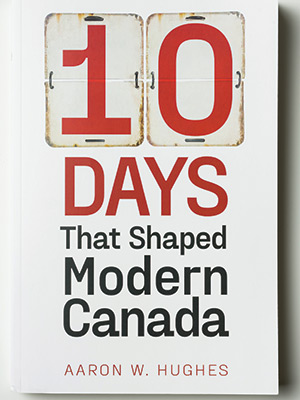
“Not all days are created equal,” writes Aaron Hughes, the Philip S. Bernstein Professor of Religious Studies. “While the vast majority of days ebb and flow in a repetitive fashion, some become so singularly momentous to a nation’s formation and outlook that, although their importance is recognized at the time, the true significance becomes apparent only after the fact.”
Hughes, who also holds the title Dean’s Professor of the Humanities, has written a history of Canada from 1970 to 2018 in 10 chapters, each devoted to a singular, transformative day. Modern Canada might seem an unlikely subject for someone like Hughes, who researches and teaches about the modern Middle East. But the contested region has given him much experience thinking about the long reverberations of singular events. That, and the fact that he is Canadian, make 10 Days That Shaped Modern Canada less a wholesale departure from his usual work than it might seem.
Hughes begins with October 13, 1970, with just a few words uttered by then Prime Minister Pierre Trudeau. “Just watch me,” Trudeau said to a Canadian Broadcasting Corp. reporter who asked him how far he would go to crush the violent Front de libération du Québec separatist movement. The reporter was critical of the military presence Trudeau had already ordered around Montreal. But three days after uttering those now infamous words, Trudeau went further, invoking the World War I–era War Measures Act, suspending civil liberties.
The book ends on an uplifting note—March 8, 2018, the day of the unveiling of the new Canadian $10 bill, featuring civil rights activist Viola Desmond.
Dangerous Children: On Seven Novels and a Story
University of Chicago Press, 2022
Gross’s book grew directly out of his eponymous course on children’s literature.
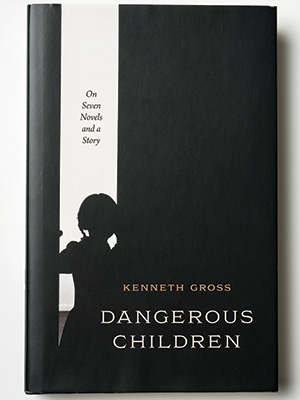
Dangerous Children, by Kenneth Gross, the Alan F. Hilfiker Distinguished Professor of English, grew out of an undergraduate class of the same title, in which students delved into stories that center on the figure of a strange and dangerous child.
In the book—as in the class, which Gross has taught three times—the stories span a century, starting with Lewis Carroll’s Alice in Wonderland, published in 1865, and ending with Vladimir Nabokov’s 1955 novel Lolita. Other texts include Carlo Collodi’s Pinocchio, Henry James’s What Maisie Knew and The Turn of the Screw, J. M. Barrie’s Peter and Wendy, and Franz Kafka’s “The Cares of a Family Man.”
In Gross’s account, fictional children can be ideal carriers of the “uncanny” experience—that feeling of strangeness that is nonetheless rooted in familiarity, in ordinary things. The stories—written both for children and for adults, or for both at once—show children with uncanny powers of speech, knowledge, and play, their nonsense and even violence, children endangered as much as dangerous. Disturbing as such figures can sometimes be, the books offer a world of “childish things” that adults might not want to put away.
Says Gross: “These fictional children ended up teaching me about myself, my own unconscious, and my own mind and obsessions—they point to forms of thought and play that remain part of one’s life as an adult.”
This Room Is Made of Noise
University of Wisconsin Press, 2023
When a handyman and a widow develop a friendship, things get complicated.
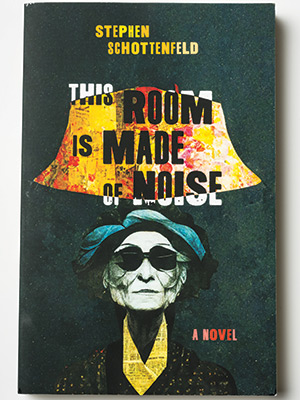
In his second novel, associate professor of English Stephen Schottenfeld tells the story of a divorced, 40-something handyman and an elderly widow who find their lives increasingly intertwined, as each grows in dependence on the other.
Don Lank, who narrates the story, has done OK for himself as the proprietor of Don’s Fix-It. But one mishap—a missed insurance payment amidst the turmoil of his marriage’s last days, followed by a leak on roof work he’d just completed (“some error at the ridge,” he explains)—and he finds himself $20,000 in the hole. To dig himself out, he develops a side gig buying and selling used goods.
That’s when he meets Millie. A widow of obvious means, Millie owns what Don believes is an imitation Tiffany lamp. He buys it from her, but it turns out to be authentic. He resells the lamp, then returns to Millie’s doorstep to give most of the profit back to her. It’s an admirable gesture, but one that also sparks a relationship between the two in which Don becomes her regular handyman and personal assistant, enjoying more trust from Millie than any of her distant family members.
The story turns on questions of motives; readers are never sure of Don’s at any moment. Don isn’t sure either, as is clear from his penchant for rumination. At the same time, Millie becomes more and more demanding, and her needs grow as she slips into dementia. If manipulation is part of the tie that binds them, who is manipulating whom? As the stress wears on, what is Don capable of?
Conversely, might this turn out to be a story of different possibilities—of generosity, grace, and connection?
Doing and Being Hip-Hop in School: Best. Class. Ever.
Teachers College Press, 2022
What happens when students help shape a curriculum?
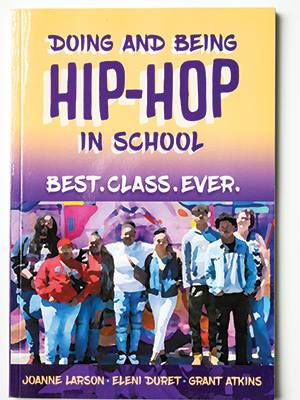
As an art form that involves inventive use of language, personal expression, and social critique, hip-hop has flourished since its birth in the late 1970s in the streets and housing projects of the Bronx. For years, many high school teachers have reported that bringing hip-hop into their lessons leads to better engaged students. There’s even a phrase for the trend: “hip-hop ed.”
A new book documents a project that’s much more ambitious than most hip-hop ed. Authors Joanne Larson, the Michael W. Scandling Professor of Education and associate director of research in the Center for Urban Education Success at the Warner School; visual artist Eleni Duret ’02W (PhD); and Rochester City School District social studies teacher Grant Atkins, trace the first four years of an ongoing hip-hop curriculum that was developed and implemented collaboratively by teachers and students. All are from the University’s partnership with East High School in the Rochester City School District.
“Too often hip-hop ed is done in classrooms with youth as an aside or a hook to get them to do ‘real work,’ ” writes Bettina Love, the William F. Russell Professor at Teachers College of Columbia University. Doing and Being Hip-Hop in School “centers hip-hop and the voices of students as the real work.”
The book, which Larson describes as a participatory ethnography, shows the positive outcomes that can unfold when students are invited to bring their historical and cultural capital into the classroom.
Still Falling
Graywolf Press, 2023
Poetry on loss, with a “journalistic fidelity to the real.”
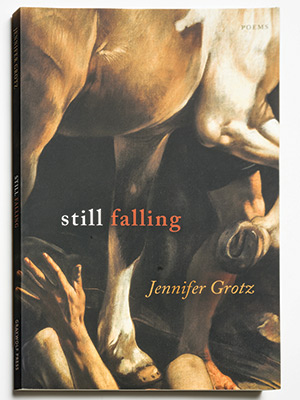
The fourth poetry collection by professor of English Jennifer Grotz is an exploration of grief. Written in isolation during the COVID-19 pandemic, Grotz, a prominent poet who directs the storied Middlebury Bread Loaf Writers’ Conferences each summer in Vermont, confronts personal losses in the context of what she describes as a “World slowed down and broken and random and wrong.”
Grotz’s expression of inward experience is grounded in observations of the external world. In 2016, after the publication of her third collection, Window Left Open (Graywolf Press, 2016)—written at a monastery in the French Alps—she told Review that the experience of the monastery changed her as a writer. “I was taught such a lesson in looking,” she said. From that time forward, her poems became, as she described them, “sense-drenched.”
This past spring, as part of McSweeney’s Short Conversations with Poets, Jesse Nathan preceded his interview with Grotz by praising “the calm, piercing exactitude of her renderings. Her language is supple, clear-eyed, neither showy nor minimalist, evincing an almost journalistic fidelity to the real.”
That “piercing exactitude” is part of a style that’s all her own. Adds Nathan: “You pick up a Jennifer Grotz book because you want to hear that voice again, and again.”
Precious Metal: German Steel, Modernity, and Ecology
Penn State University Press, 2022
Seeing steel through an environmental lens.
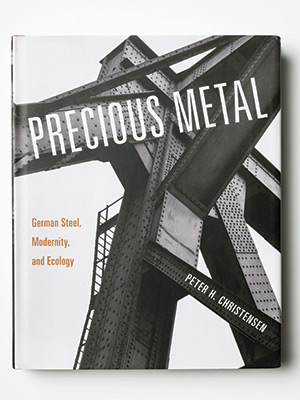
Working at the intersection of architectural and ecological history, Peter Christensen traces the life cycle of steel from its origins in the soil as raw material, to its mass production, its dissemination internationally in construction, and finally, its return to the earth as waste whose production has engendered lasting environmental damage.
Christensen—the Arthur Satz Professor of the Humanities, a faculty member in the Department of Art and Art History, and the Ani and Mark Gabrellian Director of the Humanities Center—begins his story in the Ruhr Basin of Germany, during the nation’s rapid industrialization in the late 19th century.
He shows how the widespread adoption of steel in construction enabled new feats of civil engineering and design, but also led to an ideology that conceived of the built environment as separate and distinct from nature.
That ideology has had devastating effects on the planet and its future, Christensen argues. Precious Metal is an effort to dismantle it in favor of the notion that building materials are as much a part of the natural world as the built one.
Isle of Devils, Isle of Saints: An Atlantic History of Bermuda, 1609–1684
Johns Hopkins University Press, 2022
Bermuda is as central to the American colonial story as Jamestown or Plymouth.
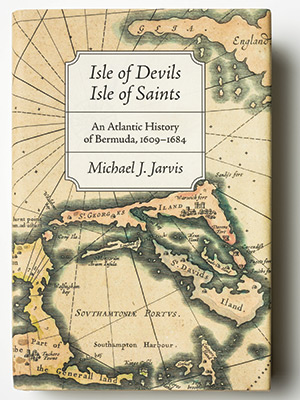
Professor of history Michael Jarvis begins his book in 1609, when the Sea Venture, an English ship on its way to the new colony at Jamestown, got caught in a monster storm and wrecked on a coral reef off Bermuda’s shore. While most of the wreck’s survivors eventually made their way to their original destination, a few stayed behind on the uninhabited island. As Jarvis describes, within a few years, Bermuda became a British territory, and with that, one of the cradles of English colonization: settled just five years after the first permanent English settlement in Jamestown, Virginia, and eight years before Plymouth.
Bermuda became the first of England’s experimental colonial laboratories to produce a successful export staple—Spanish tobacco—which, Jarvis argues, once transferred to the mainland became the foundation of Virginia’s economic success. With the success, however, also came Bermuda’s dubious distinction as the first English colony to import enslaved African people, thereby developing slavery into “an institution that became ubiquitous throughout English America.”
And yet, when it comes to histories about the early beginnings of the American colonies—the traditional origin stories of the United States—readers would be hard pressed to find much, if any, mention of Bermuda. A prequel to his first book, In the Eye of All Trade: Bermuda, Bermudians, and the Maritime Atlantic World, 1680–1783 (North Carolina Press, 2010), Isle of Devils, Isle of Saints completes Jarvis’s convincing case that the small island is nothing less than “the crucible of colonization,” he writes, and deserves to join historic Jamestown and Plymouth as part of “an English-American historical triangle of origin.”

